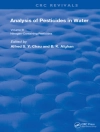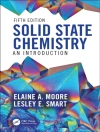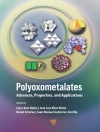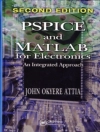Electromagnetic Wave Absorbing Materials
Electromagnetic Wave Absorbing Materials presents information on the most promising electromagnetic wave absorbing materials, with timely coverage of both conventional and novel materials including 1D, 2D, and 3D materials. This book enables readers to address the growing specification needs in the field through optimizing electromagnetic parameters and promoting interface polarization, two key properties for wireless technology in electronic applications.
Edited by three highly qualified academics with significant relevant research experience, Electromagnetic Wave Absorbing Materials includes discussions on:
- Materials including ferrites, graphene, carbon‐based composite absorbers, Si C ceramics, MOFs, and meta‐material based absorbers
- Recent advances in the field surrounding composite absorbers, conductive polymers, and ceramics, and other materials
- Potential improvements in the Internet of Things, 5G mobile applications, and intelligent transport systems through electromagnetic wave absorbing materials Potential improvements in the Internet of Things, 5G mobile applications, and intelligent transport systems through electromagnetic wave absorbing materials
- Applications including terrestrial and satellite communication (software radio, GPS, and satellite TV), environmental monitoring via satellite, and EMI shielding, as well as stealth applications
Electromagnetic Wave Absorbing Materials is an essential reference on the subject for researchers and advanced students in the chemical, electronics, and communications industries, as well as R&D scientists at companies such as Apple, HUAWEI, and China Aerospace Science and Technology Corp (CASC).
สารบัญ
Overview of Works
Acknowledgments
1 Metal-Organic Frameworks-based Electromagnetic Wave Absorption Materials
Zijing Li
1.1 Introduction of Metal-Organic Frameworks
1.2 Preparation Method of MOF Materials
1.2.1 Solvothermal Method
1.2.2 Microwave-Assisted Synthesis Method
1.2.3 Electrochemical Synthesis Method
1.2.4 Ultrasonic Method
1.2.5 Mechanochemistry Method
1.2.6 Steam-Assisted Conversion Method
1.2.7 Fluid Chemistry Method
1.3 MOF-Derived Electromagnetic Wave Absorption Materials
1.3.1 Monometallic MOF-Derived Absorption Materials
1.3.2 Multi-metal MOF-Derived Absorption Materials
1.3.3 MOF-Carbon Composite Absorption Materials
1.3.4 MOF-MXene Composite Absorption Materials
1.3.5 MOF-Conductive Polymer Composite Absorption Materials
1.4 Summarize and Prospect
2 2D MXenes Electromagnetic Wave Absorption Materials
Weibin Deng
2.1 Preparation Method of MXenes
2.1.1 Top-down Strategy
2.2.2 Bottom-up Strategies
2.2 The Properties of MXenes
2.3 Electromagnetic Wave Absorption Performance of Pure MXenes
2.4 Classification of MXenes in Electromagnetic Wave Absorbing Materials
2.4.1 Component Optimization
2.4.2 Structural Regulation
2.5 The Application Prospects of MXenes in Electromagnetic Wave Absorbing Materials
3. High Entropy Electromagnetic Wave Absorption Materials
Shengchong Hui
3.1 The Concept, Features of High-Entropy Materials (HEM)
3.1.1 The Definition of HEM
3.1.2 Broaden Elemental Combination and Microstructure
3.1.3 Dialectical View of Single-Phase Solid Solution Properties
3.1.4 The Theoretical Approach of Phase Selection in HEM
3.1.5 Four Core Effects of HEM
3.2 The Synthesis Approach and Advanced Characterization of HEM
3.2.1 HEM synthesis
3.2.2 Advanced Characterization of HEM
3.3 High-entropy electromagnetic wave absorption materials
3.3.1 High-entropy alloy
3.3.2 High-entropy oxide
3.3.3 High-entropy sulfide
3.4 The challenge and prospects of HEM
4. Novel Microscopic Electromagnetic Loss Mechanisms
Hongsheng Liang
4.1 Novel Dielectric Loss Mechanisms
4.1.1 Synergistic Effects of Selenium-Sulfur Co-Doping Induced Dielectric Polarization
4.1.2 Synergistic Effects of Hybridization State-Induced Dielectric Polarization
4.1.3 Synergistic Effects of Twin Structure-Induced Dielectric Polarization
4.1.4 Synergistic Effects of 3d Orbitals Unpaired Electron-Induced Dielectric Polarization
4.1.5 Interpretation of Energy Band Theory in Dielectric Loss
4.1.6 Defect Induced Polarization Loss in Multi-Dhelled Spinel Hollow Spheres
4.2 Novel Microscopic Magnetic Loss Mechanisms
4.2.1 Magnetic Losses Induced by The Sequence Structure of Metallic Magnetic Chains
4.2.2 Multi-model Sequence Structure for Improving Magnetic Loss
4.2.3 Enhanced Magnetic Coupling in Hollow Porous Carbon Three-dimensional Magnetic Networks
4.3 Conclusion and Outlook
5. Bridging Mechanisms Between Micro and Macro
Geng Chen, Tao Zhang, and Yuntong Wang
5.1 Introduction of Micro Factors
5.1.1 Defects
5.1.2 Interfaces
5.1.3 Conductivity
5.1.4 Dipole
5.1.5 Saturation Magnetization
5.2 Regulation of Microscopic Attributes
5.2.1 Conventional Regulation
5.2.2 Physical External Fields Regulation
5.3 The Current State and Future Potential of Bridge Mechanism Between Micro and Macro Levels
6. New Dielectric Physical Models for Electromagnetic Wave Absorption
Hongsheng Liang
6.1 Dielectric Microphysical Model
6.1.1 Dimension Distribution-induced Interfacial Polarization Model
6.1.2 Three Types of Polarization Site Models
6.1.3 Electron Hopping and Electron Migrating Model
6.1.4 Three-dimensional Conductive Network Model in Foam
6.1.5 Disordered Structure on the Atomic Scale-high Entropy Models
6.2 Physical Models Related to Structural Design
6.2.1 Hierarchical Structural Models for Improved Impedance Matching
6.2.2 Core-shell Structure Model
6.2.3 Double-shell Structure Model
6.3 Intelligent Off/On Switchable Model
6.4 Conclusion and Outlook
7. Integrated Foam-type Electromagnetic Wave Absorption Materials
Qing Chang
7.1 Carbon-based Foam for EMW Absorption
7.1.1 Pure Carbon-based Foams
7.1.2 Composite Foams Formed by Carbon Material
7.1.3 Composite Foams of Carbon Material and Magnetic Metal
7.1.4 Composite Foams of Carbon Material and Metal Oxides
7.1.5 Composite Foams of Carbon Material and Ceramic Materials
7.1.6 Composite Foams of Carbon Material and MXene
7.2 Ferrite-based Foam for EMW Absorption
7.3 Si C-based Foam for EMW Absorption
7.4 Conductive Polymer Composites Foam for EMW Absorption
8. Integral Gel Electromagnetic Wave Absorption Materials
Jiaming Wen
8.1 Dielectric Liquid Mediums Gel Electromagnetic Wave Absorption Materials
8.1.1. Progress in the Application and Research of Hydrogel EMW Absorption Materials
8.1.2. Progress in the Application and Research of Ionic and Organic Gel EMW Absorption Materials
8.1.3. Progress in the Research of Poly(Ionic Liquid)s Gel
8.1.4 Perspectives on Dielectric Liquid Medium Gels EMW Absorbing Materials
8.2 Dielectric Solid Medium Gels EMW Absorption Materials
8.2.1 Ceramic-based Aerogels EMW Absorption Materials
8.2.1.1 Preparation Method of Ceramic-based Aerogels EMW Absorbing Materials
8.2.1.2 Ceramic-based Aerogels EMW Absorber Applications and Research Progress
8.2.1.3 Polymer-derived Ceramics Aerogels EMW Absorber Applications and Research Progress
8.2.2 Metal-based Aerogels EMW Absorbing Materials
8.2.2.1 Preparation Method of Metal-based Aerogels Absorbing Materials
8.2.2.2 Metal Aerogels EMW Absorber Applications and Research Progress
8.2.2.3 Composite Metal-based Aerogels EMW Absorber Applications and Research Progress
8.3 Prospect of Integral Gel EMW Absorbing Materials
9. Thin Film Electromagnetic Wave Absorption Materials
Bin Shi
9.1 Introduction of Film Materials
9.2 Film Electromagnetic Wave Absorption Materials
9.2.1 Carbon-based Composite Films
9.2.2 Magnetic Metal Films
9.2.3 Thin Film Materials Composite with Metal Oxides.
9.2.4 Mxene Films
9.2.5 Thin Film Material Composite with Sulfide
9.3 The Conclusion and Prospect
References
เกี่ยวกับผู้แต่ง
Edited by Hongjing Wu Northwestern Polytechnical University, China
Jun Luo Institute of Microelectronics, Chinese Academy of Sciences (IMECAS), China
Meiyin Yang Institute of Microelectronics, Chinese Academy of Sciences (IMECAS), China
Series Editors
Arthur Willoughby University of Southampton, Southampton, UK Peter Capper formerly of Leonardo M. W. Ltd, Southampton, UK Safa Kasap University of Saskatchewan, Saskatoon, Canada












